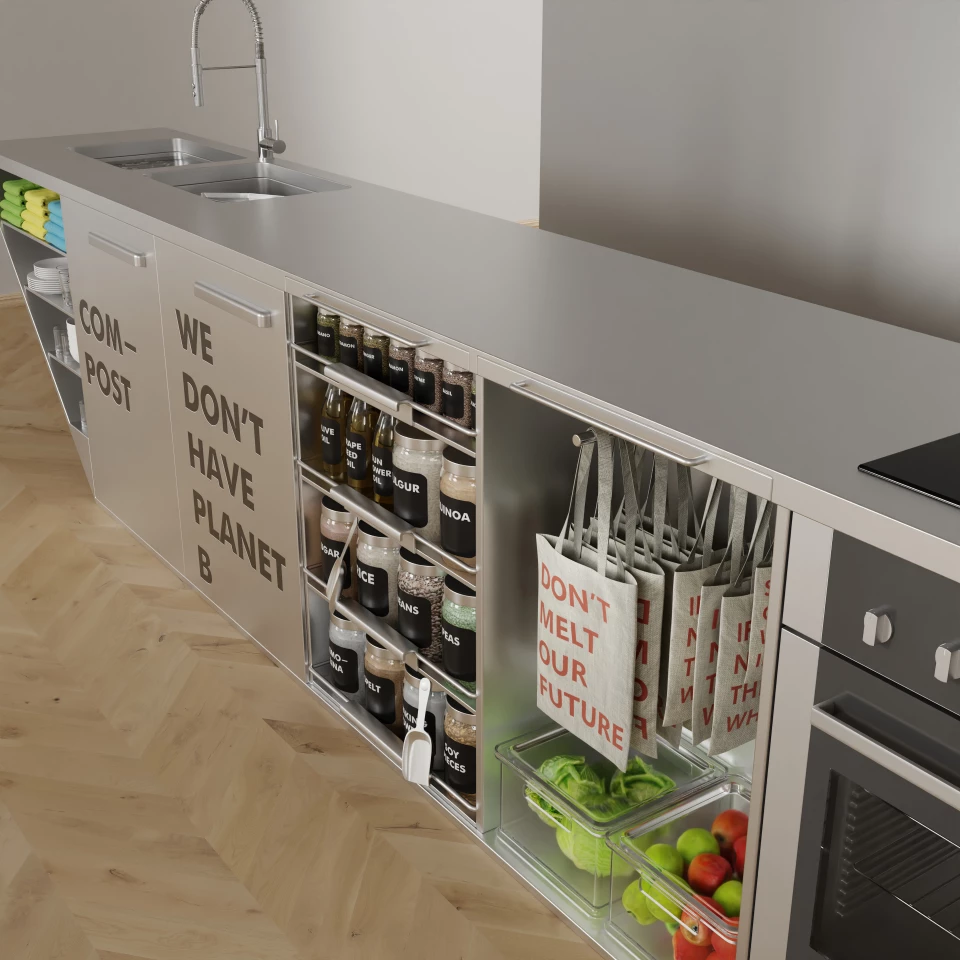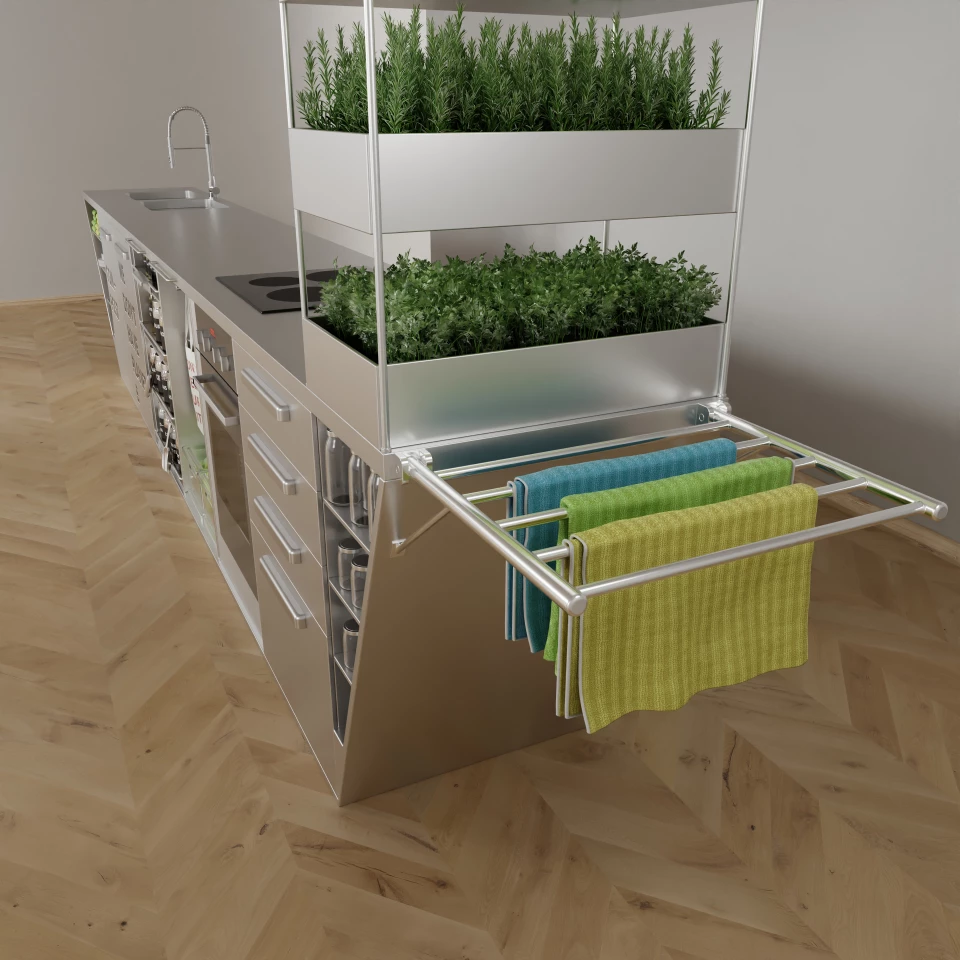Vienna-based architect Ivana Steiner has created a waste-free kitchen designed to take the effort out of living a zero-waste lifestyle. She was inspired after visiting several "unpacked" shops in Vienna and was left surprised to learn how much effort it actually takes to live without waste. Applying her architectural skills to create the perfect low-fuss solution, Steiner’s Zero Waste Kitchen was born.
“I got to know people who live a zero-waste lifestyle and was very impressed by their mindset and how much effort they take to live their lifestyle,” Ivana Steiner tells New Atlas. “As an architect, I asked myself what the kitchen looks like so that one can live zero-waste and after many discussions with the community this kitchen was created.”

Steiner’s kitchen measures 400 cm (157 in) long, 60 cm (23.6 in) wide, 86 cm (33.8 in) high and was built using recycled stainless steel and recycled glass for the containers. The structure boasts a user-friendly single structure unit with sections for glass containers, fruit and vegetable baskets, a composting box, storage space, linen bags, and a vertical herb garden. She anticipates that the kitchen itself will last 150 years or can be later upcycled as a workshop bench.
“There is a difference between the production of steel from iron at 3,000 degrees in a blast furnace and the production of recycled steel in completely different processes is an electrical process at 1,000 degrees where there are no emissions,” says Steiner. “The interesting thing about recycled steel is that it can be recycled several times without the material changing. For example, wood becomes paper when it is recycled, or wood chips.”
The Zero Waste Kitchen is designed as a multi-functional space, incorporating a large open benchtop, which also doubles as a table that you can gather around to socialize, cook or dine. The kitchen has an additional two pull-out work benches that can be used for food preparation and there are two sinks and a water jug to collect water for the herb garden. There is also a fold-out clothes horse for drying textile wipes, and a stainless-steel compost container called "the worm box" is hidden under the sink. The only things that cannot be decomposed in the worm box, however, are bones, citrus fruits, and garlic. The vertical herb garden features a daylight lamp for the plants and humus can be collected from the compost box to be used for the soil.

“A tumble dryer is also essential for the zero-waste kitchen,” says Steiner. “This is important because you do without kitchen rolls and serviettes and only work with textile wipes that you wash and dry regularly. The wipes are divided into three groups: for products, for hands and for cleaning surfaces. The towels are washed every other day, or as often as necessary.”
In addition, the kitchen is designed to be placed in the center of the room, taking it off wall, as commonly found in most kitchen designs, which invites a community aspect to the space.
The Zero Waste Kitchen prototype cost Steiner €20,000 (approx. US$23,700) to produce. Having completed the project she now has her sights on further finding creative ways to combine sustainability with design in her future projects.
“Achieving ‘zero waste’ is an ambitious project, but sometimes when the crisis is there, radical concepts are needed,” says Steiner. “I think that's the future. We have to live more regionally and more sustainably, and architects and designers have to think about how we adapt our surroundings and the products which we use daily. My experience with the Zero Waste Community was very inspiring, that people care about how we pollute our planet and that each of us can do something about it.”
Source: Ivana Steiner


















